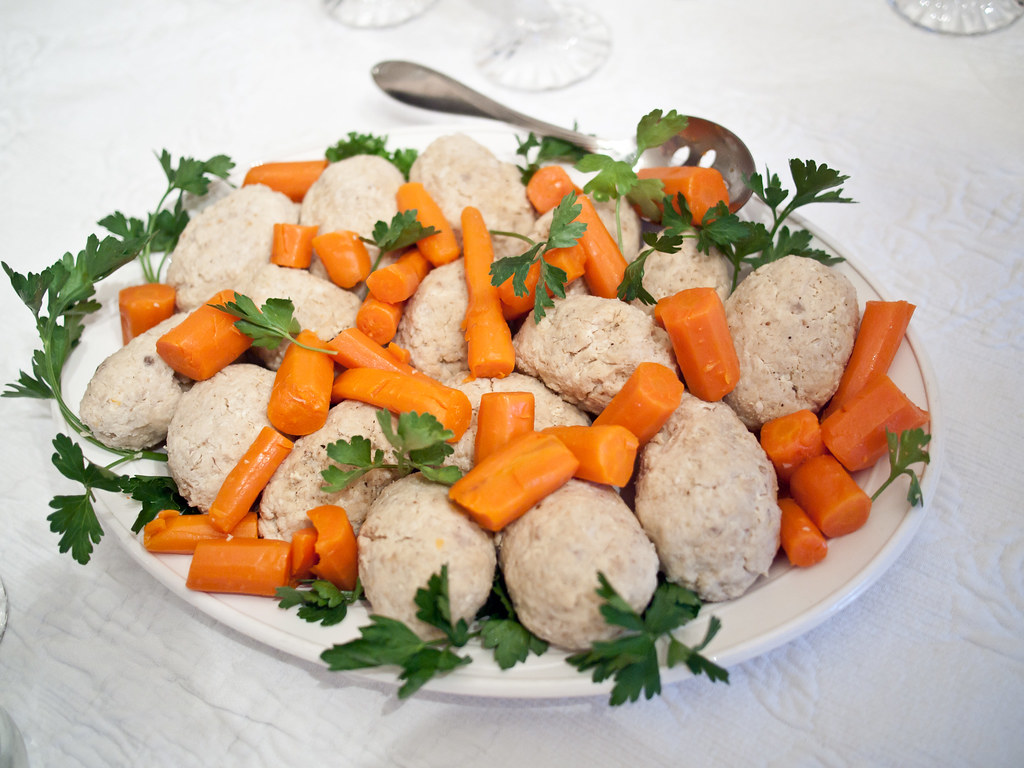For a lot of people, gefilte fish is the stuff nightmares are made of. Nobody seems to know exactly what it is, but if you grew up Jewish you definitely know what I’m talking about. There are a select few (myself included) who do truly enjoy a piece of gefilte fish. It’s really a hate it or love it type of dish, but before you pick your side you’re probably thinking, what is gefilte fish?
To set the record straight, gefilte fish is not a species of fish. Don’t go looking for it among salmon and tuna in the encyclopedia, because you’ll be disappointed the learn the truth. Actually, you might want to try gefilte fish before I even tell you what it is. Gefilte fish is a fish mixture, which I realize sounds disgusting but I promise it’s not. Well… unless you hate fish.
It’s kind of like the hot dog situation. We all know hot dogs are a mixture of things we don’t want to know about, but we all still eat hot dogs.
How to Make Gefilte Fish
To make gefilte fish, you have to remove the bones and skin and then grind up the fish. You mix it with eggs, spices and carrots and then roll the mixture into fish balls (yes, I know that sounds gross). Once they’re rolled, poach them in broth and cool the gefilte fish in the fridge. To serve gefilte fish, just slice up the ball and plate either on its own or with horseradish for an extra kick.
History of Gefilte Fish

In Yiddish, “gefilte” means stuffed, so gefilte fish means stuffed fish. Back in the day, people would skin and debone the fish, make the ground mixture, and stuff it back inside the fish to poach, but now we usually skip the re-stuffing part.
Now that you know what gefilte fish is, you’re probably wondering how it tastes. Like I said, some people hate it and some love it, so the answer to this question might be different for everyone. Gefilte fish has the texture of a dense matzo ball, but for those who aren’t familiar with all of these Jewish foods, think of gefilte fish like a fish meatloaf. In fact, it doesn’t even really taste like fish. If “fish” wasn’t in the name, you may not even know what it was made of.
As for taste, it’s pretty mild. The smell might throw you off more than the actual flavor. That’s why gefilte fish is often served with horseradish, because without some heat the dish would be pretty bland.
Gefilte fish is served during Passover at the seders, which are the two traditional dinners eaten during the holiday, but it can also make an appearance at Shabbat dinners or anytime really. Most Jewish delis will serve up gefilte fish on a regular basis. My grandparents usually have a jar in their fridge.

Fish, in general, plays a big role in Jewish tradition. It’s believed that fish represent fertility and reproduction, but fish is also easy to make, and gefilte fish can be made before Shabbat (when it is forbidden to do work) and can be eaten on Shabbat.
Gefilte fish in particular probably rose in popularity because it can be made from the less desirable parts of the fish, such as the head, making it a cheaper option for Jews living in poverty.
Nothing about gefilte fish is particularly appealing, so you really just have to venture outside your comfort zone and go for it. It comes in a jar (not an ideal packaging for fish), and it’s covered with a jelly-like substance. It’s one of those foods that really only make sense to people who grew up with it on the dinner table. But if you’re willing to look past its strange exterior, you might actually like gefilte fish. Or you might not, I’m not making any promises.


